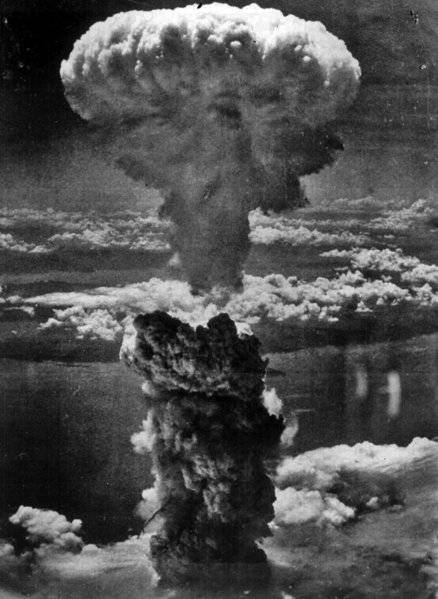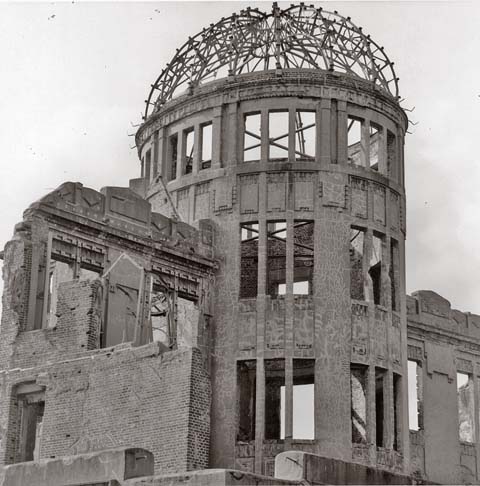Atomic Bombing of Hiroshima
The mushroom cloud resulting from the nuclear explosion over Nagasaki rises 18 km (60,000 ft) into the air. |
The city of Hiroshima is the capital of Hiroshima Prefecture, and the largest city in the Chugoku region of western Honshu, the largest of Japan's islands. It is best known throughout the world as the first city in history subjected to nuclear warfare.
Hiroshima was founded in 1589, on the coast of the Seto Inland Sea, and became a major urban center during the Meiji period. The city is located on the broad, flat delta of the Ota River, which has 7 channel outlets dividing the city into six islands which project into Hiroshima Bay. The city is almost entirely flat and only slightly above sea level; to the northwest and northeast of the city, some hills rise to 700 feet.
Hiroshima was founded by Mori Motonari as his capital. About a half century later, after the Battle of Sekigahara, his grandson and the leader of the West Army Mori Terumoto lost the battle. The winner Tokugawa Ieyasu deprived Mori Terumoto of most of his fiefs including Hiroshima and gave Aki province to another daimyo who had supported him.
Finally Asano was appointed the daimyo of this area and Hiroshima served as the capital of Hiroshima han during the Edo period. After the han was abolished the city became the capital of Hiroshima prefecture.
During the First Sino-Japanese War, Hiroshima emerged as a major supply and logistics base for the Japanese military, a role that it continued to play during World War II. The city was heavily damaged in World War II by the nuclear weapon Little Boy, the second such device to be detonated, and the first ever used in military action. The American atomic bombing of Hiroshima and Nagasaki was the major factor leading to the surrender of the Japanese government six days after the latter attack.
After the nuclear attack, Hiroshima was rebuilt as a "peace memorial city," and the closest surviving building to the location of the bomb's detonation was designated the Hiroshima Peace Memorial. The city government continues to advocate for the abolition of nuclear weapons, writing a letter of protest every time a nuclear weapon has been detonated anywhere in the world since the city's bombing, and has advocated more broadly for world peace. In 1949, Hiroshima was proclaimed a City of Peace by the Japanese parliament, at the initiative of its mayor Shinzo Hamai (b. 1905-d. 1968). As a result, the city of Hiroshima was receiving more international attention as a desirable location for holding international conferences on peace as well as social issues. As part of that effort, the Hiroshima Interpreters' and Guide's Association (HIGA) was established in 1992 in order to facilitate translation services for conferences, and the Hiroshima Peace Institute was established in 1998 within the Hiroshima University. In 1994, the City of Hiroshima hosted the Asian Games.
Hiroshima Peace Memorial, a remnant of the city at ground zero of its nuclear bombardment |
Also, as a result of the atomic bombing, Hiroshima began to receive donations of streetcars from all over Japan. (After World War II, Japanese cities - like British ones - were anxious to get rid of their streetcar systems due to damage to the infrastructure, and so there were plenty of streetcars available to give away.) Hiroshima thus rebuilt its streetcar system along with the rest of the city, and thus Hiroshima is the only city in Japan with an extensive streetcar system (although other cities have streetcar lines). Some streetcars that survived the war - and the nuclear attack - were put back into service, and four of these are still running today. For the most part, however, Hiroshima has updated its streetcars over the years.

